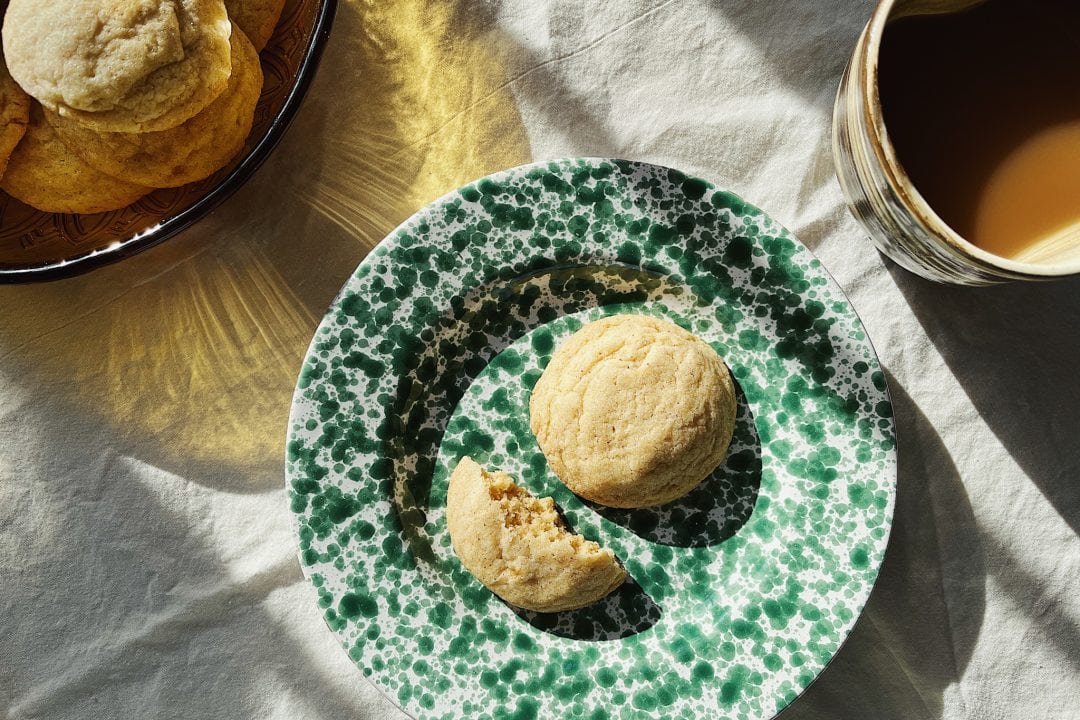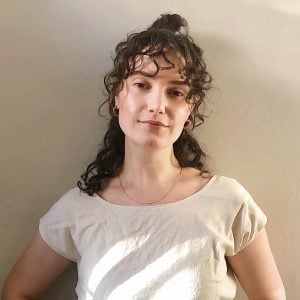Soft sugar cookies are the ideal bake when you’re in the mood for a treat, but not interested in a project that takes all day (or an extra grocery shop). These sourdough starter discard sugar cookies stick to a simple ingredients list, with an added bonus for those who keep a sourdough starter: They use nearly a full cup of starter discard.
I can say with confidence it is nearly impossible to eat just one.
By omitting—and removing—some of the flour and water that would naturally occur in a standard soft sugar cookie recipe, there’s room to stir in sourdough discard. And as anyone who regularly feeds their starter knows, our cups (and jars and containers) often runneth over with discard. The result is a pillowy-soft, subtly tangy cookie with a hint of nuttiness. I can say with confidence it is nearly impossible to eat just one.
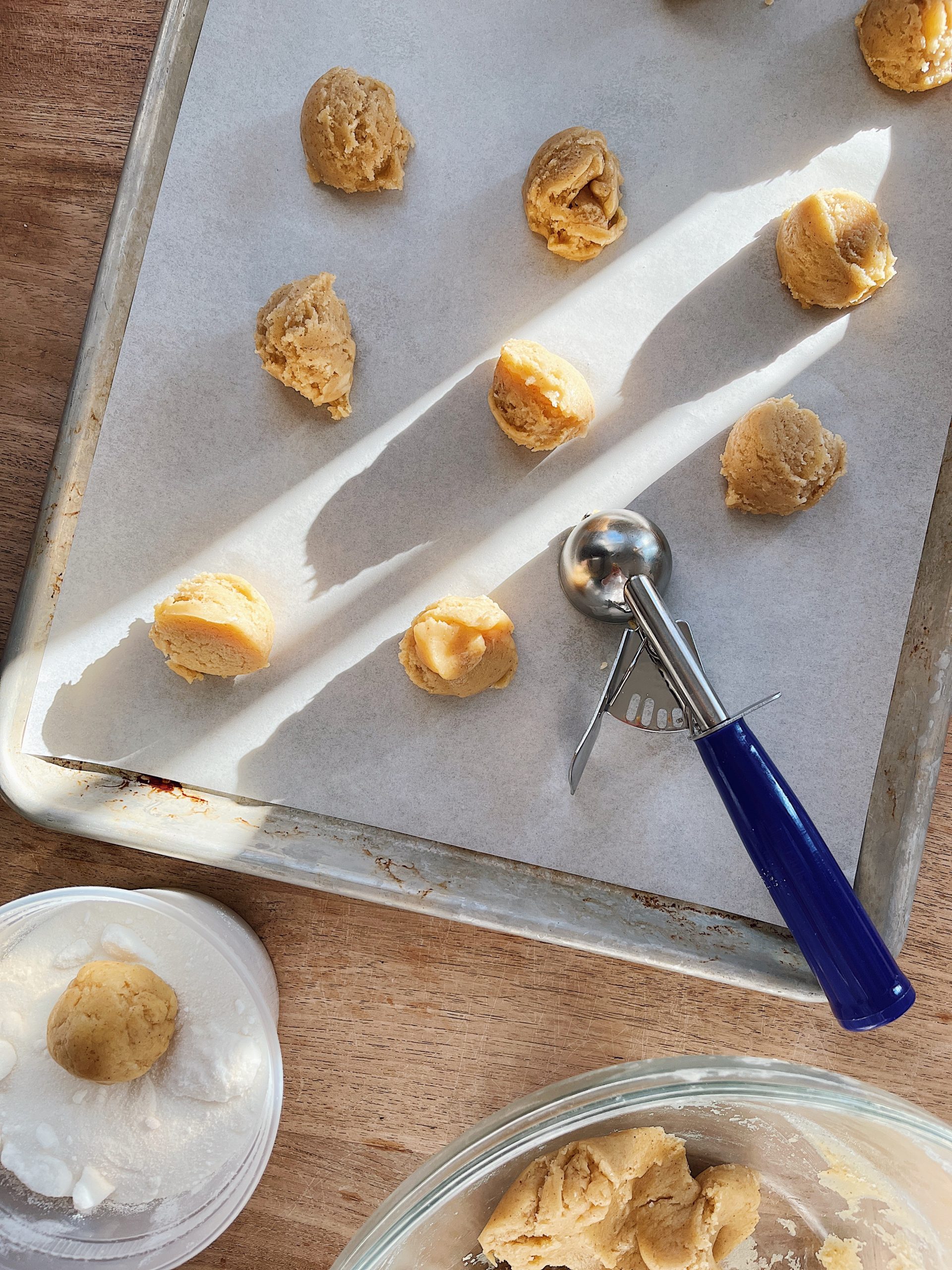
Unlike many sourdough recipes, these cookies don’t rely on discard for lift, which can take hours. And unlike many cookie recipes, this dough doesn’t need to rest in the fridge overnight. This means the dough comes together in about 30 minutes, and then you’re ready to bake. In fact, with such a minimal list of ingredients, most home bakers should be prepared to put together a batch right now. This just might become your new favorite sourdough discard and sugar cookie recipe.
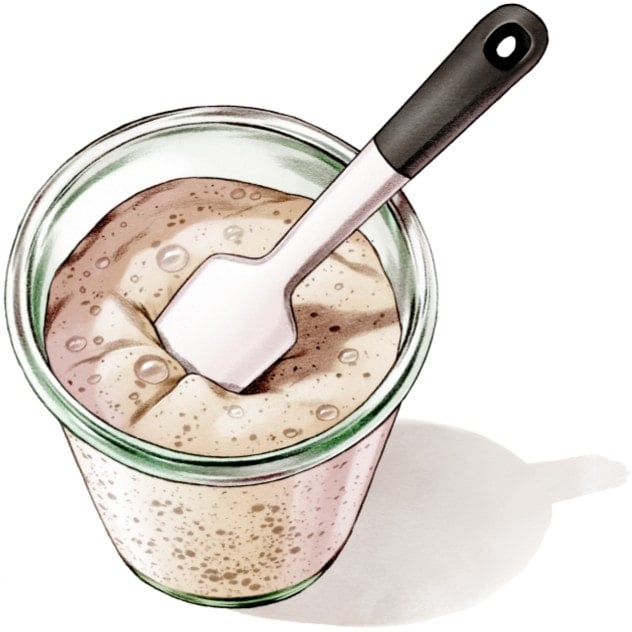
Use Unfed Starter Discard
Since this recipe also calls for a chemical leavener (baking powder), there’s no need to use ripe, recently fed sourdough starter to give the cookies lift. Because it’s really just replacing some of the recipe’s water and flour, unfed sourdough starter discard (cold from the fridge in your sourdough starter discard cache or at room temperature) works perfectly.
To Remove Excess Water, Use Brown Butter and Egg Yolks
To make room for sourdough starter discard (which, we know is fermented flour and water in equal parts by weight) in this recipe, excess flour and water needed to be omitted from the other ingredients. I started out with a rough sketch of sugar cookie ingredients: butter, egg, sugar, flour, salt, chemical leavener. Replacing part of the flour in the recipe with starter discard is easy enough: I would simply subtract half the amount (by weight) of starter used in the recipe from any additional flour I planned to add. To figure out exactly how much that would be, I first needed to see how much water I could replace.
Removing water to replace with discard proves more tricky, as sugar cookie recipes don’t tend to include pure water. But a close look at the ingredients list actually shows quite a bit of water, it’s just hiding. Most American-style butter is about 80% fat and 20% water. Melting, and then slowly browning, butter allows for much of that water to evaporate, leaving room to add that liquid back in via starter discard (just like I do in my fudgy sourdough discard brownies)—as an added bonus, you’ll also impart a lovely nutty flavor due to all those toasted milk solids. To incorporate as much starter as I could this way, I decided to build the recipe around 2 sticks (226 grams; 1 cup) of butter. By browning this amount of butter over medium heat for about 10 minutes, I could remove that 20% (or 45 grams) of water while leaving all the necessary fat. That meant I could add 90 grams of starter (45 grams each water and flour) to my dough.
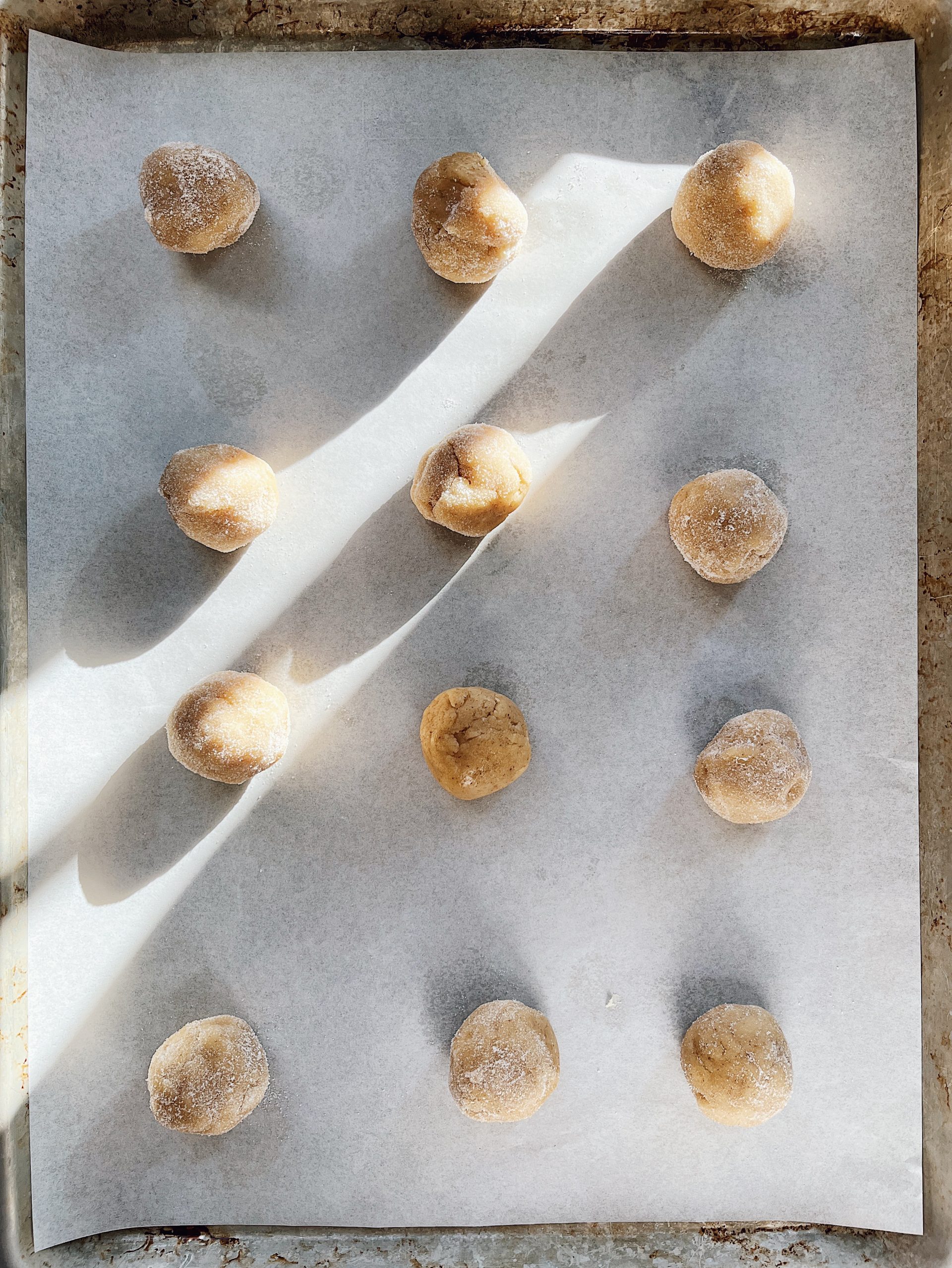
Eggs also present the opportunity to remove water from batter, as they’re about 75% water (whites are about 90% water and 10% protein; yolks are about 50% water, 30% fat, and 20% protein). Eggs help cookie dough properly bind together, as well as assist with aeration and spread, so I obviously didn’t want to omit them completely: Since yolks offer fat, which I wanted to preserve in the recipe, I decided to omit only whites.
In cookie dough, egg whites’ water helps form steam during baking, creating a puffy, cakey cookie. It’s the most simple to remove the white entirely as opposed to weighing out 90% of one, so the absence of one 35-gram large egg white meant I could add another 70 grams of starter discard (35 grams each water and flour) to the dough. After testing a few times with just one egg yolk and a few ratios of flour and chemical leavener, resulting in exceptionally cakey cookies, I made the decision to add an additional yolk to help add fudginess (a trick I’ve often turned to when baking chocolate chip cookies), but not add any additional starter to mimic another full egg’s worth of water.
90 grams’ worth of starter from the butter and 70 grams’ worth from egg white meant I’d add a total of 160 grams of starter to the dough. (It also meant I could remove 80 grams’ worth of additional flour from the recipe.)
The Best Flour For Sourdough Sugar Cookies
The beauty of these cookies is their simplicity, so a standard supermarket’s all-purpose flour is the best choice for these cookies. I developed and tested these cookies with King Arthur Baking Company’s unbleached all-purpose and Gold Medal bleached all-purpose (which is also enriched and pre-sifted), one of which should be available at most supermarkets. Regardless of which flours you use to feed your starter, I recommend a no-frills all-purpose for the cookie recipe. For what it’s worth, lately, I’ve been feeding my starter as Maurizio recommends, with 20 grams carryover starter, 30 grams rye flour and 70 grams all-purpose (and 100 grams water).
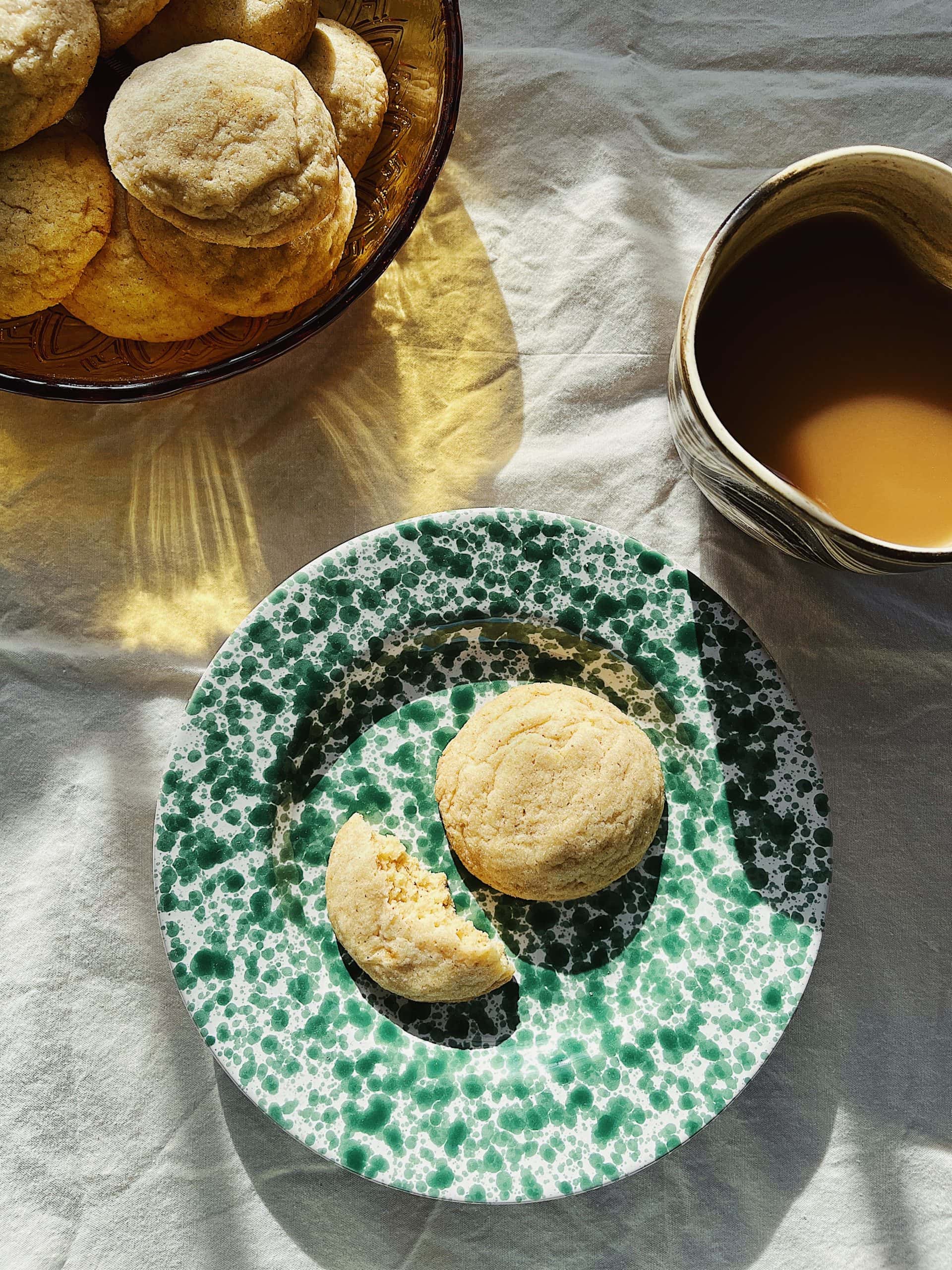
The Best Butter For Sourdough Sugar Cookies
As mentioned earlier, American-style butter is about 80% fat and 20% water. European-style butter can be anywhere from 82% to 90% fat (18% and 10% water, respectively); you could use either for the recipe as long as you hit the correct weight of remaining butter after browning, but I developed and tested this with American-style butter, so that’s what I’d recommend. (Though either will work!)
Tools For the Best Sourdough Sugar Cookies
The beauty of this cookie recipe is it requires no special equipment. No hand or stand mixer, no special baking pan or cookie cutter. You’ll need a small skillet or saucepan to brown the butter, large and medium bowls for the batter, and 1 or 2 standard half sheet pans for baking. While you can certainly weigh or measure out each cookie before rolling into a ball, I do recommend a #40 (2-tablespoon) cookie scoop to ensure they’re uniform in size.
Sourdough Starter Discard Sugar Cookies Recipe
Print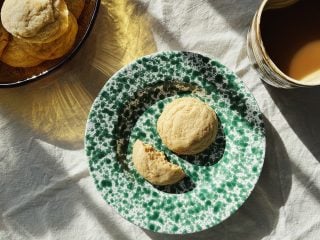
Sourdough Starter Discard Sugar Cookies
- Author: Rebecca Firkser
- Prep Time: 30 minutes
- Cook Time: 13 minutes
- Total Time: 43 minutes
- Yield: 32 cookies
- Category: Dessert, Snack
- Cuisine: American
Description
The platonic ideal soft sugar cookie, made with a small portion of sourdough starter discard.
Ingredients
- 226 grams (1 cup, 2 sticks) unsalted butter, cut into 1-inch pieces
- 330 grams (2 ⅔ cups) all-purpose flour
- 6 grams (1 ½ teaspoons) baking powder
- 4 grams (1 ½ teaspoons Diamond Crystal or ¾ teaspoon Morton) kosher salt
- 200 grams (1 cup) granulated sugar, plus more for rolling
- 50 grams (¼ cup) light brown sugar
- 28 grams (2 large) egg yolks, cold from the refrigerator
- 9 grams (2 teaspoons) vanilla extract
- 160 grams (scant ¾ cup) sourdough starter discard (unfed, 100% hydration), preferably cold from the refrigerator
Instructions
- Place the butter in a small saucepan or skillet over medium heat. Melt the butter until it starts to foam and sputter, 3-5 minutes. Whisking often, continue to cook the butter until it starts to quiet down, smells nutty, and turns deeply golden brown, 7-10 minutes. As you whisk, try to lift any browning milk solids that are stuck to the pot. Remove from the heat and immediately pour into a large heatsafe bowl placed over a digital scale, making sure to scrape in as many browned bits stuck to the pan as possible. You should have about 180-190 grams butter remaining. Let the butter cool slightly, about 5 minutes, while you prep the dry ingredients.
- In a medium bowl, whisk together the flour, baking powder, and salt.
- When the butter has cooled slightly, add the sugars and use a whisk to beat until well-combined, about 1 minute (the sugar won’t dissolve completely and may look separated). Beat in the egg yolk and vanilla until well-combined, about 30 seconds. Scrape down the bowl and beat in the discard until just combined, about 30 seconds (the dough should be emulsified now). Scrape down the bowl and fold in the flour mixture until just combined. Let the dough rest for 10 minutes.
- While the dough rests, preheat the oven to 350ºF (177ºC) with a rack in the center, and line two sheet pans with parchment paper.
- Fill a small bowl with more granulated sugar. Use a #40 (2-tablespoon) cookie scoop to portion out 12 mounds of dough (each should weigh about 30 grams) onto one of the sheet pans. Roll each mound into a ball and then place in the bowl of granulated sugar and toss to coat.
- Evenly divide the 12 cookie balls on one prepared sheet pan, leaving about 2 inches of space between each ball. Bake the cookies, rotating the sheet pan from back to front halfway through baking, until the cookies are golden at the edges and just set in the center, 13-16 minutes. While the first batch is baking, scoop, roll out, and sugar the next batch and arrange on the second sheet pan.
- Pop the second tray of cookies into the oven. Let the first batch of baked cookies cool on the sheet pan for 5 minutes before removing to a wire rack to cool completely. Scoop, roll, and sugar the remaining dough. When the second tray of cookies comes out of the oven, bake off the third tray of cookies (reuse the sheet pan and parchment from the first batch).
- Let the cookies cool completely, then store in airtight containers at room temperature for up to 1 week, or freeze for up to 3 months.
Sourdough Starter Discard Cookies FAQs
Can I use a sourdough starter discard from the refrigerator?
Yes! In fact, cold starter discard will ultimately help chill down the batter, which starts on the warmer side as a result of the melted butter. I tested with discard that had been refrigerated for 12 hours or more, and with some that had just been discarded (and was therefore unrefrigerated); but always found the dough slightly easier to emulsify and roll when the starter was added cold. Typically I used one that was a few days old; but in some batches of cookies I used a discard that had been unattended in the refrigerator for upwards of two weeks.
Can I use a vegan butter here?
Vegan butters do contain water, but not necessarily the same ~20% as American-style dairy butter; and further, many do not contain fatty ingredients that brown the same way. I can’t say I recommend it (but if you have luck, let me know!).
Do I have to let the dough rest for 10 minutes?
This brief rest at room temperature helps the flour hydrate and allows the sugar to absorb some moisture, which keeps these cookies soft. Unlike many cookie dough recipes that use melted butter, which need at least a couple hours’ (if not overnight) rest in the refrigerator, this one needs just 10 minutes. Don’t skip it!
Do I have to roll the cookie dough balls in sugar?
No, that’s technically an extra—but delicious!— final pre-bake step you’ll often see in soft cookie recipes like this. If you want to save yourself five minutes, skip it.
What’s Next?
If you have more sourdough starter discard lying around after making these cookies, put it to good use in Ciambella, an Italian lemon cake, or these floral and oh so easy-to-make sourdough drop biscuits.
Or, see all the sourdough starter discard recipes for more inspiration.


